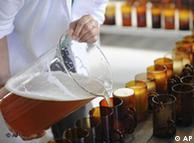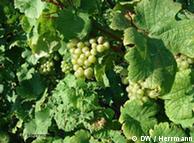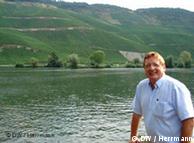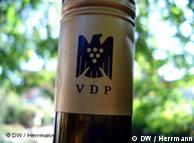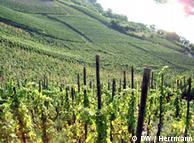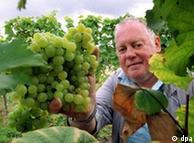When CEOs Become Winemakers
Many successful CEOs love wine, and some choose to make their own. Then they find out just how difficult—and expensive—it can be
Frank Grace, an American based in London and group chairman of Team Relocations, a corporate relocations company, recently discovered one of the great secrets of the wine business: You make a lot more money selling 30,000 cases of $15 wine than you do selling 6,000 cases of $75 wine.
It is the reason that such high volume vineyards as Kendall-Jackson's Vintners Reserve and Yellow Tail have made fortunes for their owners. However it is a lesson that many CEOs, successful in other fields and financially secure, never learn. As often as not they are not so much concerned with making money from owning a winery as garnering prestige and enjoying the lifestyle of being a gentleman farmer in such salubrious spots as Napa or Tuscany.
Grace originally purchased Il Molino di Grace in the heart of Italy's Chianti region as a vacation home and, because the property contained vines, he began making high-end Chianti Classico and Super Tuscans.
It's the Money
Over time, though, he found his involvement in the winemaking aspects of Il Molino have assumed a far greater demand on his time than he anticipated. The winemaking started as a hobby but is now developing into a money-making operation, a viable business. He has learned that "you can't protect your quality unless you're making money and besides, it's against my religion to not make money. If something's not working financially, ultimately it's not going to survive."
This is the central dilemma faced by any CEO looking to make wine as a hobby: It's a very expensive hobby.
Last year, though, Il Molino di Grace began to make money on an operating basis, after 11 years, thanks to its new, lower-priced label, Il Volano, which retails for around $15 a bottle—about half the price of its Chianti Classico Riserva. But Grace is also learning what everybody who owns a winery learns: namely, that any profit has to be pumped right back into the business. As he puts it, "any money you make, you quickly find ways to spend."
Another aspect of owning a winery that surprises many executive amateurs is how you have to wear many different hats. Susan Hoff, former senior vice-president at Best Buy (BBY) recalls how she and her husband were so excited when they received the first order at their new winery, Fantesca Estate in Napa Valley, but then realized that neither of them knew how to process the credit-card payment. "You are so not used to that, having to take care of everything yourself, when you step off the corporate runway" she explains.
For fun or for business?
Bill Murphy of Clos LaChance in Santa Cruz, Calif., experienced the same thing when he left his senior-vice-president position at Hewlett-Packard (HP). His wife cautioned him that she wasn't going to book his plane tickets. "I had people to do things like that!" he exclaims in mock indignation. "Now I have to make my own travel arrangements."
On a more serious note, he advises any aspiring owner that there are important decisions that have to be made going in. "Do you want to be in it as fun thing, to go to the Napa Valley Wine Auction and try to make the world's best Bordeaux blend, where it's more of a hobby than a serious business? Or do you want to make a business out of it?"
He cautions that "if you want to do the former, that's fine, it can be a lot of fun, even though it will cost you a lot of money. But it's hard for people to take you seriously if that's all you are going to do."
Richard Parsons, chairman and recently retired CEO of Time Warner (TWX), finds the rewards of owning Il Palazzone in Montalcino, Italy, are twofold. "It is a personal experience and the very opposite of what I do in my day job…and the end product is something tangible and beautiful."
Immersed in Silence
The pleasure he takes his winery and its wine is summed up in its motto: "We drink all we can and sell the rest!"
He also finds great relaxation in being in Tuscany, telling an earlier interviewer that "for someone like me, who lives and works in the chaos of New York, spending a few days immersed in silence, surrounded by these splendid hills, it is a dream."
For Joe Anderson, chairman and CEO of health-care-management and consulting company Schaller Anderson, and now owner, along with his wife, Mary Dewane, of the Benovia Winery in California's Russian River Valley, the biggest reward of owning a winery is the ability to participate in a long-term project. "It really changes your whole approach to life understanding that you're only along for the ride. You can provide all the input that's necessary, but the whole thing will happen on the vines' schedule, not yours. You've got to sit back, sip some wine, watch the vines, and be happy."
Not an approach many CEO are in the habit of adopting in their professional life, but then perhaps that's the point.
Click here to see which CEOs divide their time between the board room and the vineyard.
Passmore is a writer and photographer living in New York City.
